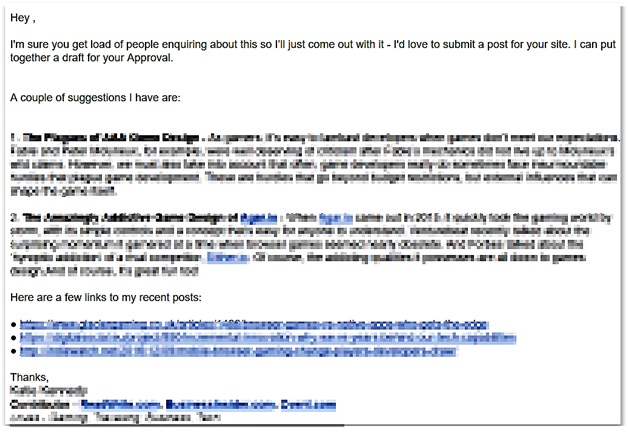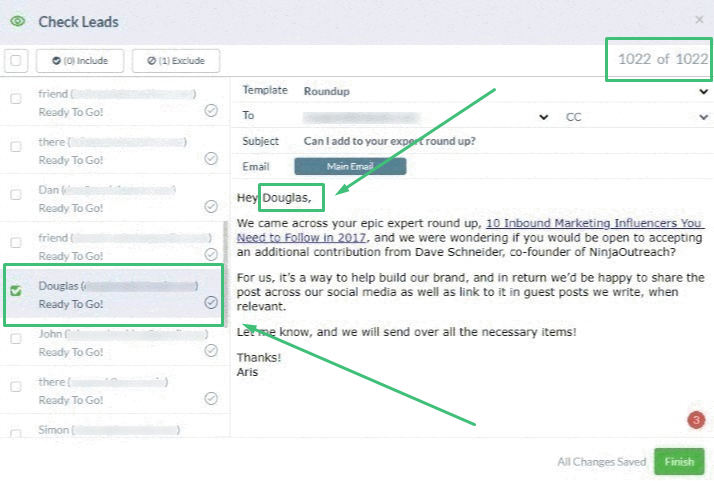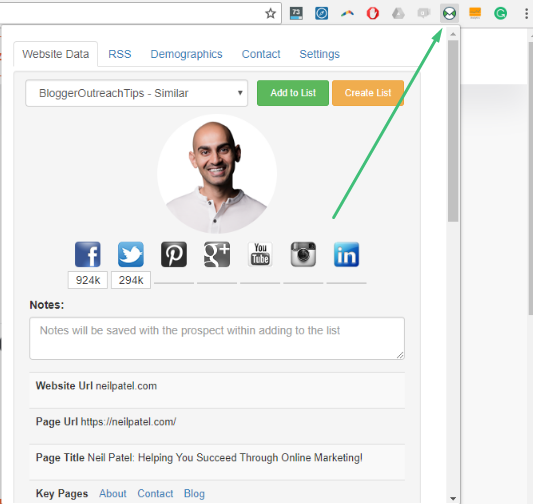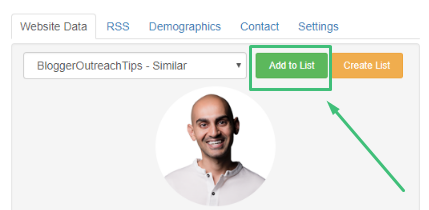Too Many Requests from Your Network
Please complete verification to access this content.
Outreach emails are a crucial part of link building. However can you get those links without sending outreach emails to your target blogs?
In this article, I’ll talk about what I’ve learned about link outreach, and how I sent cold link outreach emails that can convert over 15%.
Have you ever been REALLY mad at SEO?
So mad that you thought it was huge a crapshoot and that it was impossible to get real, quality links from other bloggers?
I have.
For the longest time, my link outreach emails didn’t work.
I spent hours finding great link opportunities for my sites. I used “expert” email templates to persuade them to link to my content, and guess what happened?
I got a grand total of 0 links.
I was so mad that I was on the verge of switching industries entirely.
Until something happened…
One day out of frustration, I went against the grain. I deleted all of my outreach templates and sent 10 custom emails to the last prospects on my list.
And boom!
I got 3 links.
After that fateful day, I started testing different link outreach emails and noticed a pattern:
If 4 simple things were used in my emails, my conversion rates shot through the roof.
I’m not talking about a simple 10% increase, I’m talking about results that make you feel weird because they seem like a fluke.
In fact, right now I feel like I’m in a hydroxycut commercial…
But the following result is real:
My conversion rate on cold link outreach emails went from 1% to over 14%.
The result?
My main client’s traffic increased by 94% in 6 months and my uncomfortable feeling towards cold outreach disappeared.
If you’re mad at SEO like I was, it might be because of your outreach templates.
Luckily, that can be fixed. 🙂
Why Common Outreach Templates Don’t Work
I’ll be the first to admit that using someone else’s outreach template for link building sounds like a good idea.
After all, it:
- Worked for them
- Doesn’t require much work for the link builder
- Can be automated
But there are several issues with this—and they become apparent when you put yourself in the shoes of the person on the other end of the email.
Issue #1: Website Owners Get These Emails Frequently
Website owners know popular link building templates by heart because they see them ALL THE TIME.
Whenever one shows up in their inbox, they throw up their defenses.
Within 30 seconds they delete the email (and maybe even mark it as spam).
Issue #2: They Don’t Focus on Value
A standard outreach template goes something like this:
“Hi,
I found your site and you write good articles.
I wrote a good article that would fit well on your resource page: [Link]
I’d love to have it mentioned if you think it’s a good fit.
Either way, keep up the good work.
Best,
[Name]”
Would you like to know why this template sucks?
It never addresses why the other person would want to link to your content.
It essentially says, “Hey, I want you to link to me so I can rank higher. Pls? Thanks.”
Issue #3: They Aren’t Personalized
Most outreach people send emails like this:
Ughhhhhhhhhhhhhhh.
This email was obviously sent to thousands of other websites.
How do I know?
- The weird space after “Hey” in the greeting because the software couldn’t find a name associated with my email.
- The content of the email isn’t dynamic—meaning it doesn’t change regardless of who it’s sent to.
These emails don’t work.
If a website owner thinks (even for a second) that your email is automatically sent to thousands of other sites, they’ll delete your email.
And can you blame them?
They’re too busy to deal with your auto-email that provides ZERO value to them.
If you want links, you need an ultra-personalized email instead.
I know that sounds like it’ll take a lot of time, but if you use a blogger outreach CRM like NinjaOutreach, you can send custom emails at light speed.
Take a look at this mass email outreach feature below.
Before sending a ton of link outreach emails, you also get the option to skim through each recipient’s profile.
From there, you can view identifying tags, relationship status, message history, and even their previous blog posts.
This will give you material to quickly personalize each link outreach email.
A Look at the Data…
Since May of 2017, I stopped using other people’s templates and made my own.
So far, I’ve sent 337 link outreach emails with the 4 elements I’m about to go over.
Here’s the data:
- Open Rate: 82.49%
- Reply Rate: 37.69%
- Conversion Rate: 15.43%
I also get several compliments like this on a regular basis:
With a template, you’re lucky to get a 3% conversion rate.
Luckily, your link outreach success rate doesn’t have to be that low…
4 Elements of Link Outreach Emails That Actually Work
Element #1: Extreme Personalization
Including someone’s website name and URL in an outreach email isn’t enough—30%-40% of each email needs to be unique.
You want the reader to feel like they were the only person you emailed.
And you can do that by including these 3 things in each email:
1. Their First Name
Whenever you find a site owner’s email address (or webmaster/marketing director if it’s a company) you need to use their first name in your greeting.
I use this as my greeting: “Hey, [NAME]!”
Proper grammar and an exclamation point help this stand out from the first line.
Tools to Find People’s Email Addresses: hunter.io
I use the free hunter.io (not affiliated even though they have a great name :D) Chrome plugin.
Once it’s installed all you need to do is head to a site on your link outreach prospect list and click the plugin icon in Chrome.
About 70% of the time, it’ll find emails associated with that site. If it doesn’t, I normally go to the “contact us” page and use the form (it’s less likely you’ll get a response from a contact form this way).
Tools to Find People’s Email Addresses: NinjaOutreach
Another Chrome plugin you can use to find anyone’s email address is NinjaOutreach.
The process is pretty same at first. Download and install the plugin, go to a link outreach prospect’s blog, and click the plugin to start crawling all emails associated with the site.
But NinjaOutreach doesn’t stop there. The plugin also crawls for other data such as other social profiles, engagement and SEO metrics, and even an RSS feed.
If you have an account, you can add any link outreach prospect into a contact list, too, then view all of this data in an organized dashboard.
And, as I previously mentioned, having all this extra data on hand can give you loads of material with which to compose a more personalized link outreach template.
2. An Actual Compliment About Their Site
Most people see right through a hollow compliment in outreach emails, but if they can tell you actually enjoyed something about their site, it can work wonders.
Instead of opening your email with:
“Hey, [Name]!
My name is ___ from ____.
I love your site!”
Take a look at their site, read some of their content, check out the about page, then open with something like:
“Hey, [Name]!
My name is ___ from ___.
I found your site the other day and am super impressed with the work you’re doing with ___.
I started reading [Blog Post Name] and I learned a ton. The section on ___ really stood out to me because ___.
So, thanks for taking the time to write that post—I found it incredibly valuable!”
Mention something specific that you liked and why you liked it.
I’ve found that specific, well-thought-out compliments drastically increase conversion rate.
3. A Warm Closing Line
90% of the outreach emails I’ve seen end with this:
“…I’d love for you to link to the post, but no worries either way.
Best,
[Their Name]”
This isn’t necessarily bad, but it doesn’t help you.
Your closing line is another opportunity to personalize your emails—and the more personalization the better.
My favorite closing line is: “Let me know your thoughts, [Name]—I’d love to connect with you!”
This let’s them know that you’re interested in a relationship with them (rather than just getting what you want) and gives you another opportunity to use their first name.
If your emails are so good that people think you are a real person and aren’t sending the same email thousands of times, you’ll get responses like this:
Element #2: Authority
Are you more likely to respond to an email from a New York Times Bestselling author, or a shift manager at Taco Bell?
If we’re being honest, the true answer is WAY more likely.
That’s the power of authority.
You can use this psychological principle in your outreach emails to increase your conversion rate—regardless of whether you’re doing outreach for yourself or someone else.
All you need is something that sounds impressive.
Examples of Authority
As long as you aren’t lying, you can use pretty much anything for this.
Do you (or the person you’re working with) have an impressive:
- Title?
- Accolade?
- Accomplishment?
- Statistic?
Use it in a short introductory sentence at the start of your email.
Example:
“Hey, [Name]!
My name is Hunter and I’m the founder of Rank Tree—a company that helps small businesses, startups, and brands drive passive traffic and leads through SEO.”
It’s short and to the point, doesn’t sound fake, and the word founder sounds good.
Use whatever you can to implement authority in the first sentence of your email. If you do, the person on the other end of the email will take you more seriously.
Element #3: Value
It’s the first thing you learn when you study copywriting…
When it comes to making decisions, people need to see what’s in it for them.
If your outreach email isn’t focused on the value you bring to the table, people aren’t likely to even respond.
That’s why it’s vital to focus the second half of your emails on a benefit-oriented pitch.
To formulate your pitch, you only need to answer one question:
Why Would They Link to You?
It’s a hard question to answer, but one you need to think about if you want links.
There are generally 4 reasons why people will say yes to your link ask:
Reason #1: Your content is so good, it makes them look good.
Whenever someone finds a hilarious meme or reads an insightful article, what’s the first thing they normally do?
They share it—they send it to a family member, friend, or colleague they think would be interested.
Ever wonder why they do that?
They want to be seen by others as intelligent, funny, helpful, etc. through the content they share.
And you can reverse engineer this principle when developing your content so it attracts links and shares.
To do this, you must focus on creating the best answer to a search query on the internet.
It sounds like a lofty goal, but you’re really only competing with about 10 articles for any given keyword (and most of the time, the articles that already rank on the first page aren’t very good).
Before you start writing your content, research every result on the first page for your target keyword.
Then, ask these questions about the content that ranks on the first page:
- What type of content already ranks? (Is it a list post, an in-depth guide, an expert roundup, etc.)
- Is this content compelling? (Does it make you feel a certain way, is it insanely insightful with tons of research, is it visually appealing, etc.)
- What’s similar about the content that already ranks? (Does each article include research, are they all really long, do they all have tons of pictures, etc.)
- How could each of the top 10 results be improved? (Make a master list of things missing from these articles.)
Doing this gives you a roadmap to creating the best content on the internet for your target keyword. And when you have the best content on the internet, influencers are happy to share it with their audiences.
Reason #2: They’re interested in a relationship with you.
This goes back to authority.
If someone thinks a relationship with you will benefit them, they’ll likely say yes to your link ask in order to begin or continue a friendship.
That’s one of the reasons I like saying something about “connecting” at the end of my emails.
Reason #3: They’re interested in a transaction with you.
They think they can benefit from trading links (or something else) with you.
Reason #4: They already know about you (and like you).
The person happens to be in your audience, follows you on social, or heard about you from a friend.
Most likely, scenarios 1-3 will get you the majority of your links.
But there’s actually a secret 4th reason people will say yes to a link ask…
Element #4: Offering a Freebie
Yes, bribery, but not in a sketchy sense.
Let me explain…
If you have something you can offer someone in your outreach emails, you can:
- Drastically increase your conversion rate.
- Actually develop relationships with people.
When you give a gift with your ask, your email suddenly stops screaming, “HEY I WANT SOMETHING FROM YOU!!”
It just whispers that instead. 🙂
You now come across more like someone who’s interested in a relationship instead of a transaction.
Offering a free gift, regardless of whether they give you a link or not, shows that you respect the person on the other end of the email.
The result?
You get more responses and conversions with your emails.
Once I started doing this, I got 3x more links.
What You Should Offer
Thinking of a freebie to offer can be tough—especially for a business without many digital assets.
So, here’s a list to inspire things you can create (or offer if you already have them):
- An eBook
- A free 1 year membership to your membership site
- A free 6 month trial of your software/tool
- A PDF report
- Access to a video/workshop
How to Position Your Freebie
My favorite way to position a freebie is as a means of beginning a mutual relationship.
At the end of my email, I include a phrase like this:
“Whether you add it or not, I’d love to offer you a free [Insert Gift Here] and one to give away to your audience as well.
Let me know your thoughts, [Name]—I’d love to connect with you!
Thanks!
-Hunter”
It’s really that simple.
What Would Happen to Your Traffic If Your Link Outreach Emails Converted at Over 14%?
I’ve tried nearly every email template out there, I’ve tried writing my own and winging it, and I’ve tried incorporating these elements in my emails.
Incorporating these 4 elements into your link outreach led to hydroxycut-type results.
You can get similar results by taking the time to write fantastic, personalized emails.
Have any questions or thoughts? I’d love to chat in the comments!










